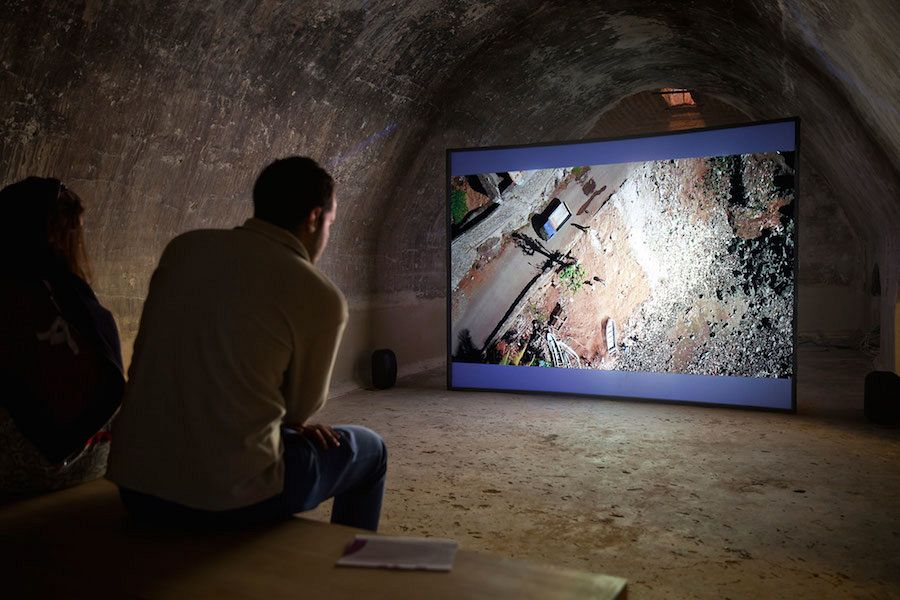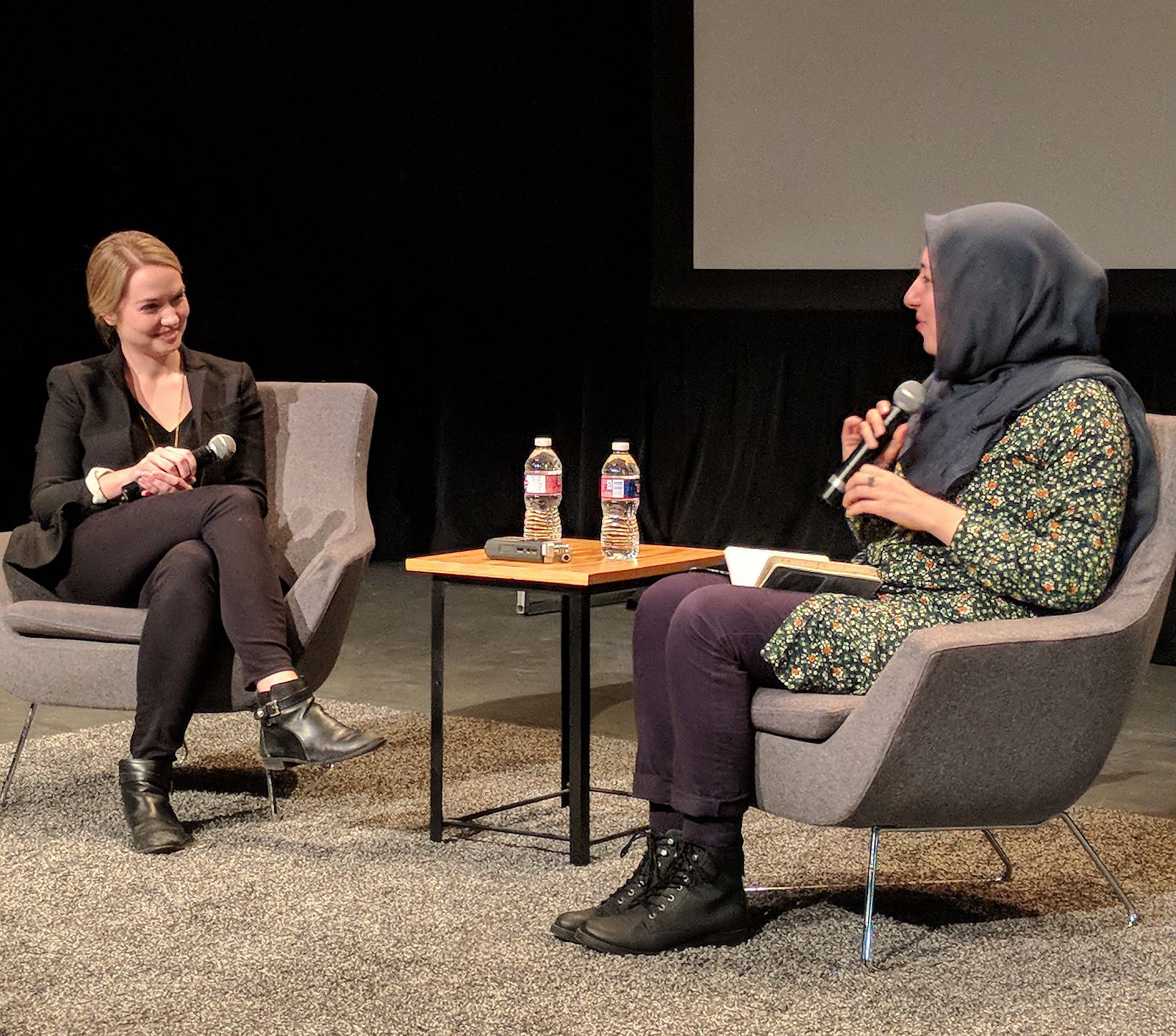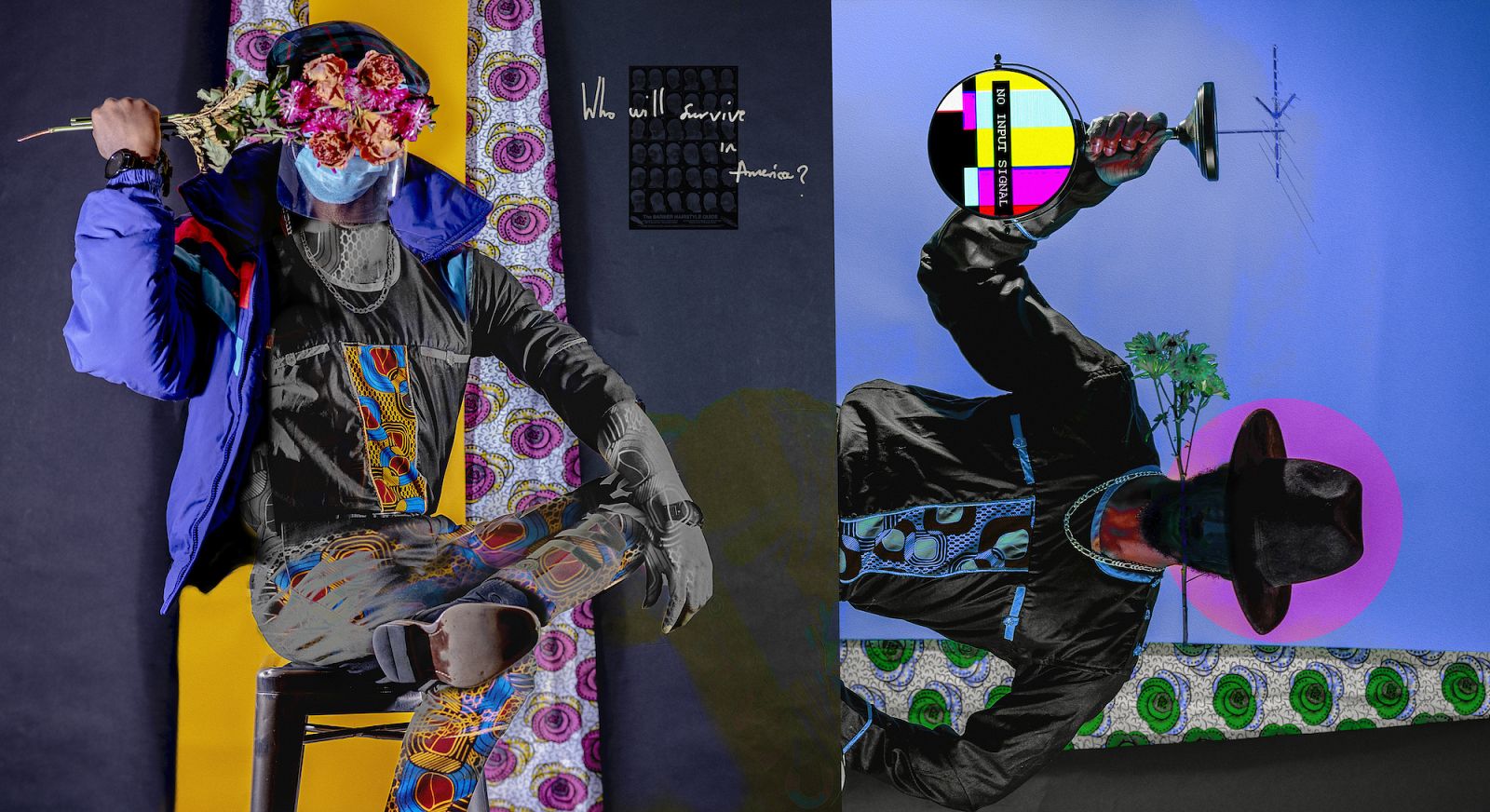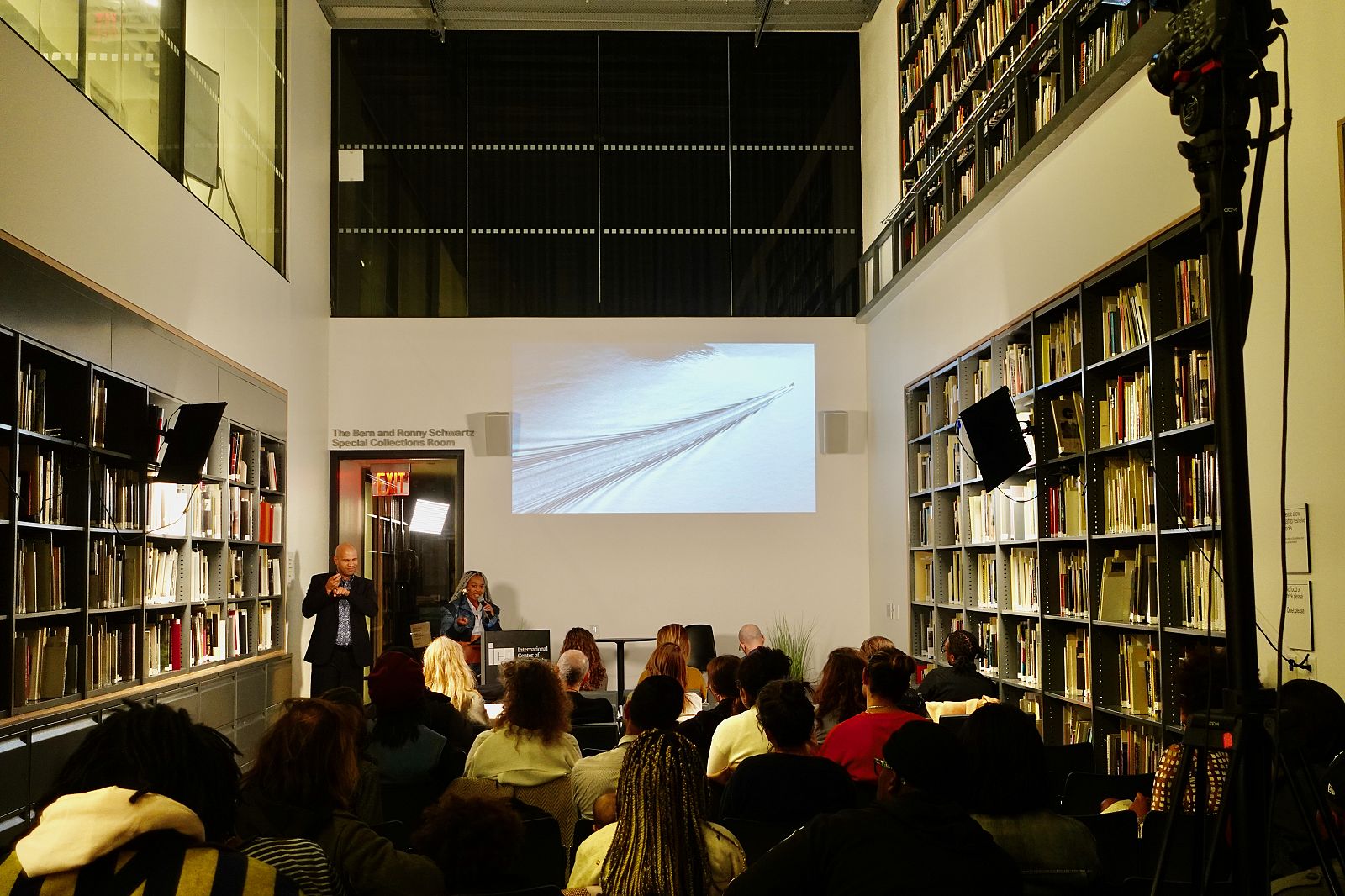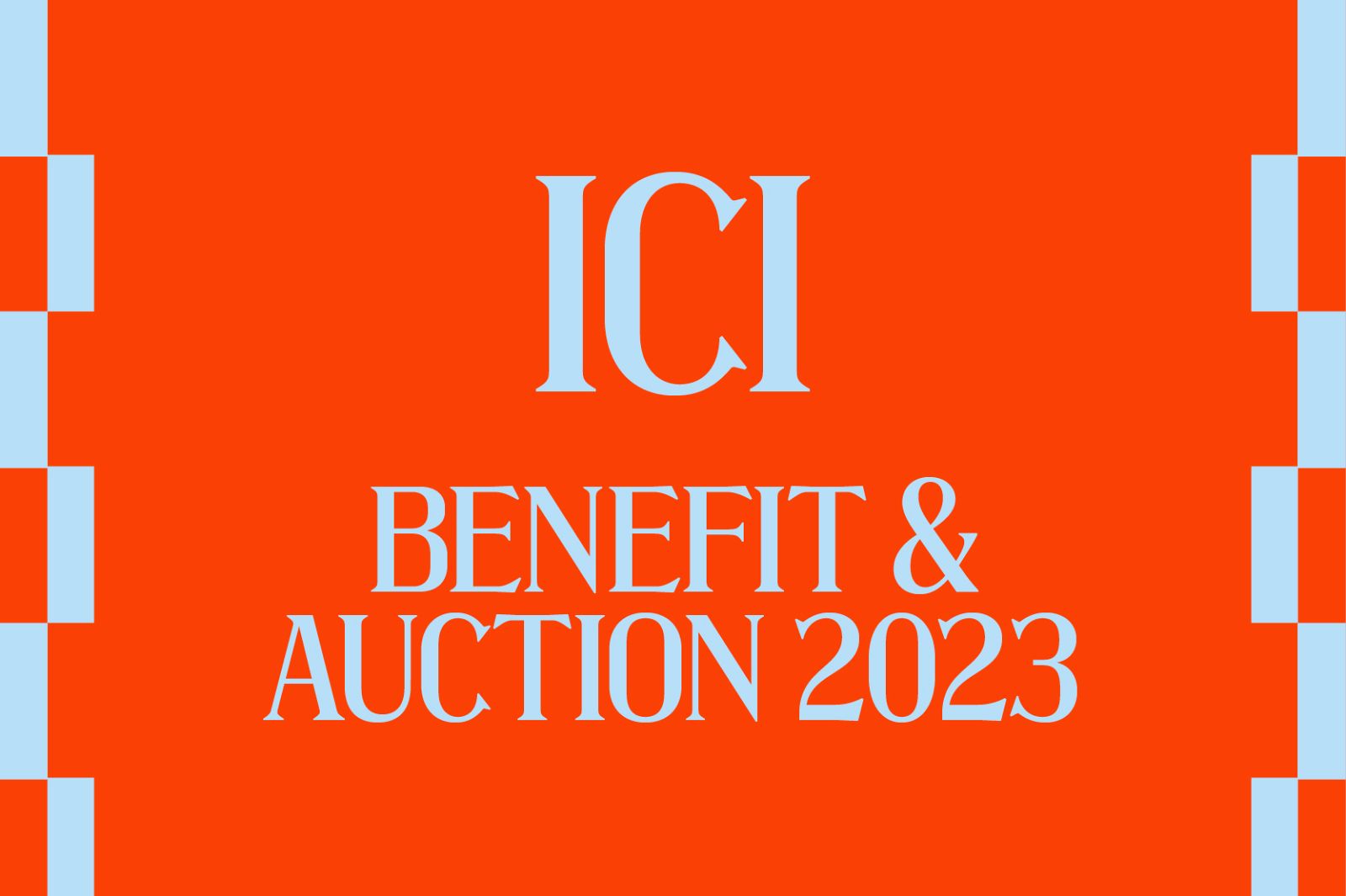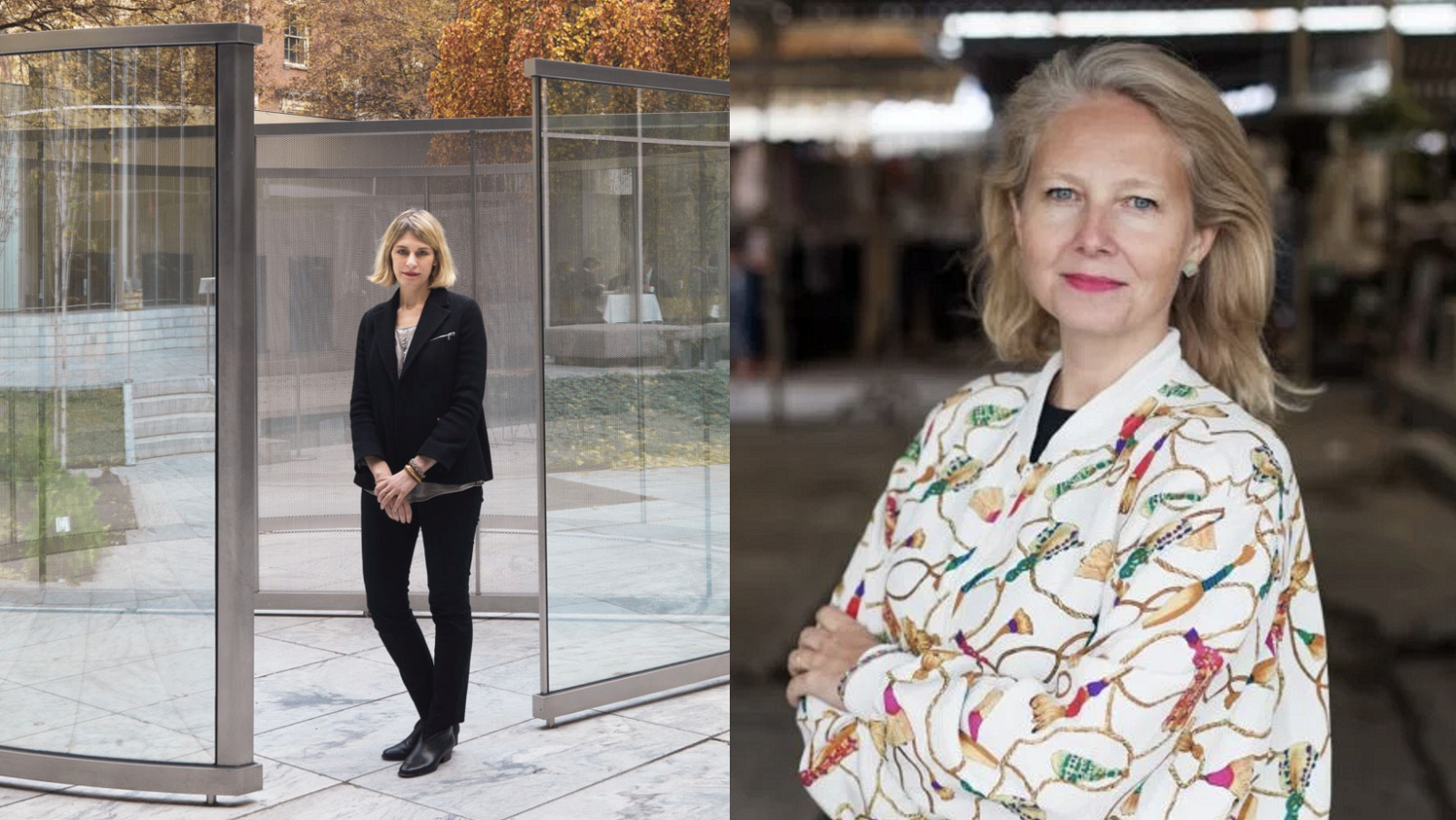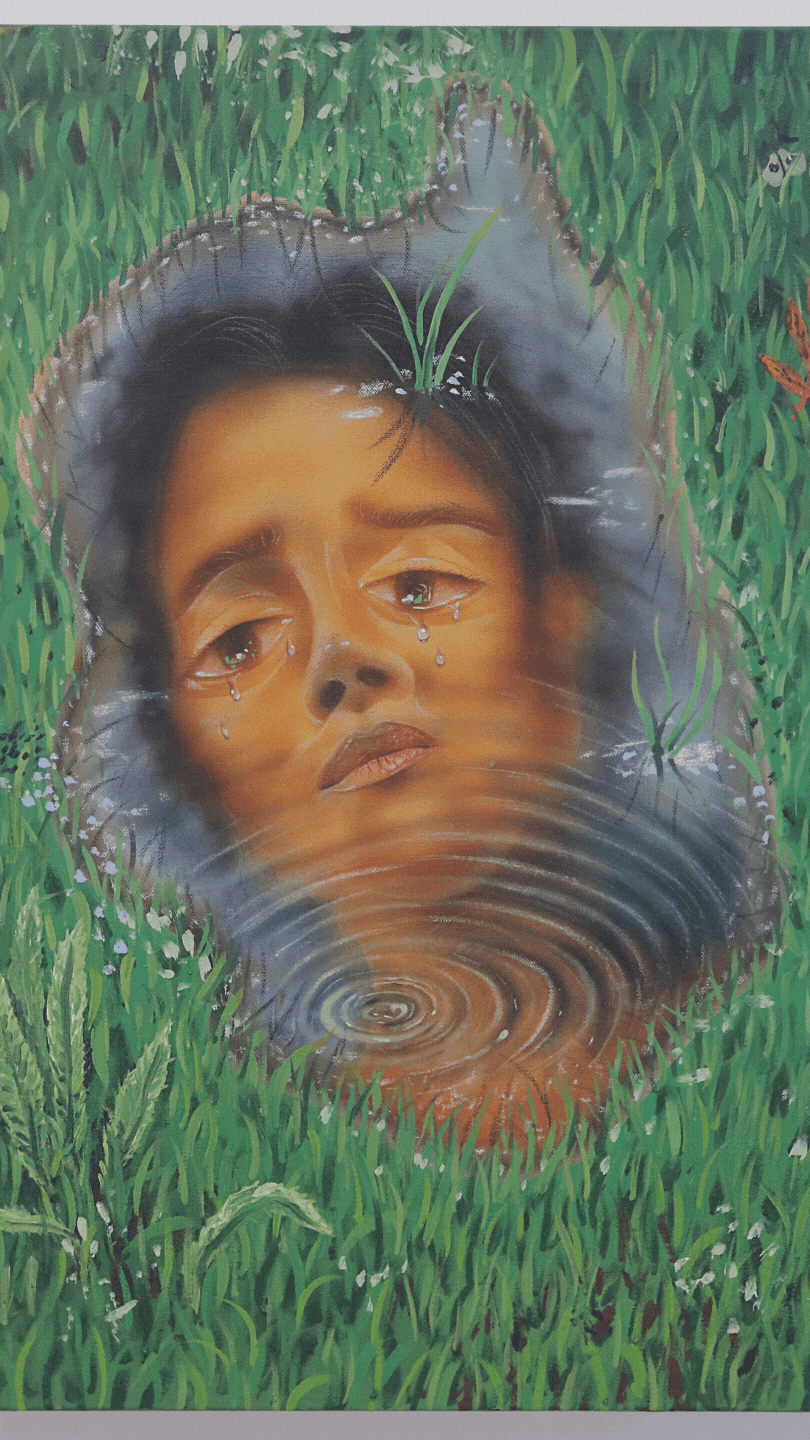Edited by Julian Myers-Szupinska (Oakland, CA)
Originally published in ArtMargins, 12 September 2016
The following dialogue took place on the occasion of Marrakech Biennale 6: Not New Now/Quoi de neuf là, (February 28-May 8, 2016), curated by Palestinian curator Reem Fadda. After visiting the biennial and attending a curatorial seminar organized by ICI, the journal The Exhibitionist staged a discussion with seminar participants María del Carmen Carrión, Mohamed Elshahed, Renaud Proch, Eszter Szakács and İpek Ulusoy. The conversation below ranges from discussions of contemporary art, craft, archaeology, and postcolonial therapy to politics and aesthetics across the Arab world, and is part of an ongoing collaboration between ICI and The Exhibitionist.
Julian Myers-Szupinska is Senior Editor of The Exhibitionist. María del Carmen Carrión is Director of Public Programs and Research of ICI. Mohamed Elshahed is a Cairo-based architect, independent researcher, writer, and Curator of the British Museum’s Modern Egypt Project. Renaud Proch is Executive Director of ICI. Eszter Szakács is a curator at the contemporary art organization tranzit.hu in Budapest. İpek Ulusoy is an independent curator and writer from Istanbul, Turkey, currently based in Dubai, UAE, and Managing Editor of ArteEast Quarterly.
Julian Myers-Szupinska: Should we consider the title? In English, it’s Not New Now, and roughly the same in Arabic.
Renaud Proch: The French title is Quoi de neuf là, which of course has nothing to do with “not new now.” Rather, What’s new here?
María del Carmen Carrión: Both could be said to make a claim about tradition and history.
JMS: This question brings me to the matter of how the exhibition’s various forms of framing and mediation read the works included. The exhibition was staged in various sites, including Bahia Palace, El Badi Palace, Menara Gardens, Dar Si Said Museum, and Koutoubia Mosque, as well as individual projects throughout the center of the city. Let’s describe our encounter with the exhibition—taking into account that we each took an individual path through it. Should we start with the exhibition at the Palais El Bahia?
RP: Yes. For me, Bahia was most substantial exhibition out of the five sites. This is partly because of the venue’s size and layout, which allowed for the curators to include more artists, and which enabled a certain level of ambition. The other venue that worked at this scale was El Badi, but maybe this venue felt a bit more sensational or spectacular, whereas Bahia was where Curator Reem Fadda’s key goal—to define contemporary creativity at the intersection of arts and crafts, and to root these conflicting definitions in a Moroccan context—unfolded most clearly.
JMS: Where, for you, did her premise start?
RP: It unfolded from the first point of encounter, the prologue, which was Eric Van Hove’s sculpture D9T (Rachel’s Tribute), 2015. This was then seen in context of the Casablanca School, an exhibition-within-an-exhibition curated by Salma Lahlou and Fatima-Zahra Lakrissa of Moroccan modernist artists. This group was arranged around a small courtyard, and then answered by Fadda’s arrangement of contemporary artists in ten rooms around a subsequent, larger courtyard.

Eric Van Hove, “D9T (Rachel’s Tribute),” mixed-media composite sculpture, 160 x 160 x 132 cm, 2015. Photo courtesy of the artist.
So there was this sequence from Van Hove’s sculpture to the Casablanca School to the contemporary artists who supersede the Casablanca School’s modernist concerns. And so Van Hove’s work is both a prologue and a quick way of summarizing Fadda’s project, which is to stage a reconsideration of contemporary art practice, and to do so in a way that might be more diverse than what is being encouraged by the current systems of international contemporary art—art fairs, the market, and so on. We could see this gesture as one in line with curatorial moves made in the Venice Biennale in previous years, such as Massimiliano Gioni’s inclusion of outsider art in The Encyclopedic Palace in 2013, or Okwui Enwezor’s more global and diverse way of bringing contemporary creativity together in All the World’s Futures in 2015. I think this is what Van Hove’s work meant to signal. He built this modern object, a sort of abstracted engine, with traditional artisans using traditional skills.
Mohamed Elshahed: That makes sense in terms of the exhibition at Bahia. But does that argument apply to the other sites? Because if this was the argument, then the works at El Badi failed to contribute to it in the same way.
MDC: What do you think Badi was about?
ME: I’m trying to figure it out. It’s another piece of the puzzle the biennale proposed. I agree with Renaud about the argument at Bahia, but the exhibition at Badi Palace was much more about the monumental. Scale became an important issue.
MDC: It also seemed to be about archaeology.
ME: Archaeology and materiality. I think the individual sites mattered a lot. Seeing Al Loving in the rooms at Bahia, which are nothing like a white cube, was intimate. Whereas the works at Badi were not—they were largely outside, in a sort of ruined palace.
MDC: This is what allowed Bahia to offer more information—there were two sub-curated exhibitions within the larger ensemble—and a better sense of thematic connection among works. There, it was not only about the production of objects, but also of knowledge—this seems to be what Fadda is offering. But there were other entry points, like archaeology and the ruin at Badi and at the performance we saw at Menara. In these spaces, what Omar Berrada called “cultural silence” seems to be at issue, and trying to recover something that has been lost. And then at Koutoubia the subject of labor became the central issue, matters of immigration and the movement of workforces and the sort of dispossessions that result from that movement.
RP: It was a show about art and life and death. These various issues, like ruins, matter or labor, amounted to something quite visceral for me.
JMS: I was honestly less enthusiastic about the exhibition at Bahia than it seems the rest of you were. I agree that the framing there meant to posit the works as engaging with traditions that are lost, destroyed, and silenced, and that artists today can regain only in fragments. But I found the consistent reference to craft as what connected them with the past quite tricky. This ensemble of works included African-American artists Sam Gilliam, Al Loving and Melvin Edwards, and I understood the exhibition to read them, Edwards in particular, as producing not artworks but anthropological artifacts. In this context the works came across as fetishes or tribal objects. For me, this had the effect of erasing Edwards’ modernism. The works were presented as semi-inscrutable artifacts from “the past,” when in fact they were directly engaged with a modernist narrative: for Edwards, Pablo Picasso and Romare Bearden, the history of modernist sculpture and bricolage. The exhibition didn’t read them within this discourse at all, but instead as cult objects. This “nativizing” of the American artists felt troubling to me.
İpek Ulusoy: Why? Because of the hierarchies between art and craft presumed in a Euro-American context?
JMS: Maybe. Certainly the exhibition was attempting to perform a sort of revaluation of craft. But I think that in the last fifteen years craft has taken on a very different place in the contemporary art world, where it’s now the valued term. We no longer have a modernist high art against which craft is measured as secondary. And so an idea crucial to the historical moment in which the American artworks were produced went missing. And this slippage extended in different ways throughout the Bahia exhibition. There was a consistent attempt to build continuities between contemporary art and craft techniques in the Maghreb, a sort of dream of restoring or reuniting this genealogical line. I thought this argument was strained.
MDC: Can you point to a specific artist or ensemble where you felt this to be so?

Sam Gilliam, Installation view of untitled paintings, acrylic on propylene, ea. 457.2 x 1036.3 cm. All works 2011. Photo by Julian Myers-Szupinska. Courtesy of the author.
JMS: I thought that the rooms curated by Omar Berrada were the most successful at performing this connection, partly because they took an allegorical mode, one attuned to breaks or fragmentation with the past. They were thinking in terms of montage. But contrary to Renaud, I thought Van Hove’s work was unconvincing, and I thought Oscar Murillo’s room was troublesome. The latter was obviously not reaching back to any craft tradition in particular, but rather performing a vague or generic artifactual look—one that, I’ll add, is actually ubiquitous in the contemporary art world these days.
And as I’ve said, the way that the African-American artists were posed in terms of craft seemed to me odd. To locate Gilliam’s draped paintings in the context of a regained “craft” and “tradition,” removes him from a narrative of American abstraction that is his actual discursive home. I see Gilliam as working in parallel to someone like Lynda Benglis, among artists enacting a radical critique and expansion of the means of abstract modernist painting—foregoing painting’s rectangular window frame, expanding into a spatial surround, and so on. But that conversation disappeared in the biennale. Because he works with stained textiles, can Gilliam's work be so simply squared with craft? I see his art as more critical, modernistic, and future oriented.
MDC: This is the problem with reading Bahia only through the lens of a rapprochement between contemporary art and traditional or vernacular production. It’s much more interesting to think of Gilliam in connection with the Otolith Group, whose film In the Year of the Quiet Sun (2013) was screening across the same courtyard—that is, through a sort of dystopian and postcolonial lens.
JMS: I like that idea. But this speaks to a different problem I had at Bahia, which is that the architecture of the palace meant that relations among works were hard for the curators to stage. Everyone had a room, and works rarely occupied the same visual field. At least visually, each artist related to the ornamental decoration of the rooms they inhabited, rather than to other artworks. The exhibition worked best when, as in the rooms curated by Berrada, there was more contact, for example, between Yto Barrada’s banners (Applique Majdoub Flag, 2016) and Abderrahman al-Majdoub’s poems, or between works by Sara Ouhaddou and the vitrines with Ahmed Bouanani’s drawings and notes.
ME: That was one of the few spaces at Bahia where multiple artists were side by side.
MDC: This worked differently with the Mona Hatoum installation at Dar Si Said, which had an incredible, ethereal feedback with the museum.

Mona Hatoum, Installation view of “Baluchi (blue and orange),” wool, 135 x 240 cm, 2008. Photo by Julian Myers-Szupinska. Courtesy of the author.
JMS: Right, you were able to take in her burned rug and altered chair, against the museum’s throne for a married couple. But it brings up the question of how the exhibition at Dar Si Said fits into the Biennale’s argument as a whole. That ensemble of works is about domesticity, the married couple, children and the enclosed space of the home, which is actually quite distinct from the concerns being worked through at Bahia.
MDC: Dar Si Said is a museum that is falling apart, that is itself almost a ruin. So the idea was to create a sort of disruption to this quasi-ethnographic setting, and to read the museum’s holdings in a contemporary way.
RP: Julian, I want to go back to your point about Gilliam. Did you see his work as having been handled in too formalist a way?
JMS: It wasn’t formalist enough! Because I see formalism as central to the moves that Gilliam was making. Obviously different exhibitions can present work differently, and I thought that room looked great, but I thought the absence of the white cube made it hard to grapple with the meaning of Gilliam’s works. They just became décor.
RP: Just as obviously, though, this biennial didn’t have the option of showing the works in that way. It’s part of its structure that the show is going to happen in those spaces. There is no white cube to inhabit. And maybe that is part of what making a biennial in Marrakech should be, or simply is. These are the conditions that Fadda was given, and this should inflect how we evaluate her choices. We can’t just say, “How would this have looked in a white cube?” The Khalil Rabah installation at Dar Si Said, for example, had these clunky video monitors in front of a delicate mosaic. I don’t think it was just an exigency: “Well, that’s the space I have.” These connections and considerations were thoughtfully staged.
İU: Might those spaces, which were often quite overwhelming and intense in their own right, limit our access to those threads you see Fadda putting forward? As palaces, these spaces were designed to be stunning. And I found that the mosaics and gardens, with all their amazing and exotic details, sometimes made it difficult for me to separate out the works as such, much less to figure out their place in Fadda’s larger argument.
Eszter Szakács: Renaud, are you saying that the curatorial concept is, in a way, emanating from the site itself?
RP: I don’t think I’m not saying that. But I’m really just reflecting on Fadda’s position. She is coming from the Guggenheim Abu Dhabi, a traditional institutional context, but was here asked to work in a context where the white cube simply doesn’t exist. And this context is one that comes along with specific ideas and connections.
ME: Why should we even be attached, at this point, to the white cube?
MDC: It’s important because of what İpek said—because the information of the site risks overwhelming the works included.
RP: But why does Gilliam’s work need to be divorced from context to be understood?
JMS: Look, I’m not exactly a staunch defender of the white cube. But the white cube, too, is a context with ideas and connections. And I wonder what happens when we take a form of work produced within a modernist tradition, and that relies for its meaning on a certain rhetoric of display, out of that rhetoric of display. Are Gilliam’s situational paintings simply bunches of stained fabric that can be placed anywhere, in relation to anything, and still make sense? Can they interact with any scenario without becoming just stuff? Is the work infinitely malleable or are there limits?
I had similar problems with the installation of the works by the Casablanca School; they were in rooms with all-over mosaics. Those mosaics were extremely complex, symmetrical, patterned—designed to create visual overload, and even send viewers into a state of trance. The Casablanca School paintings, by contrast, are asymmetrical, stylized and simplified in ways that their surrounding rooms are exactly not. They stage a different form of opticality. This is further complicated by the fact that the exhibition wanted to claim a line of genealogy, or at least a visual borrowing, from one to another. This contradicted what we were actually seeing!

Mohammed Chabâa, Installation view of “Composition,” cellulose paint on wood, 2.5 x 3.6 m, 1975. Photo by Julian Myers-Szupinska. Courtesy of the author.
ES: I want to pose a different question that may have bearing on this conversation. Who was the intended audience of this biennale? Was it us—foreign visitors? I understand, for example, that the Casablanca School’s recovery of North African design in the context of modernist painting can be understood as a political statement. But because this work and historical context is a new one for me, I found this politics fairly opaque. This might be easier to grasp for a local audience who can read between the lines.
İU: And there was not very much overall mediation—no catalog essay—that might have made these matters clearer. So we’re forced to read between the lines, even though we don’t have the requisite knowledge to do so confidently.
ES: This might speak to my own expectations and habits. I am searching for the political register, but not quite finding it.
JMS: If we think about the various sites as part of some overall, interlocked argument that Fadda was producing, Koutoubia was, for me, key. That was where the politics of the exhibition, which were about negotiating some political, subjective and aesthetic disposition to decolonization, were made clear.
İU: Can you describe that show?
JMS: I can, but first I want to address what you and Eszter said about mediation. The mediation for the show was all on the spot, in pamphlets that accompanied each artist’s work. This had certain practical problems. There was one case at Badi where wind blew all the pamphlets into a moat, and several cases where all the pamphlets had been taken, so we didn’t have an indication of who the artist was, much less framing information for why the work was there. This was especially tricky when the work itself was veering towards archaeological artifact or monument, or where it was not operating in a conventional relationship to its site. Moreover, as İpek said, Fadda and the other curators did not produce a text explaining their intentions. There was no catalog or general introduction, no general articulation of what the show intended to perform.
So a big responsibility was placed on viewers, not only to see most of a geographically dispersed exhibition in a labyrinthine city, but also to understand what they saw. That said, despite these limitations we can embrace that responsibility, and assemble some sort of interpretation from those experiences. I think, for example, that I disagree with Renaud that there is a primary site. Instead, I think we can imagine the exhibition as composed of five or six chapters, each constituting a distinct piece of the “argument.” For example, we’ve talked about the Bahia exhibition and its consideration of craft, artifact and the recovery of vernacular traditions. We’ve also talked about Badi and its approach to monumentality, archaeology and ruins. This means we then need to play out what subjects of the other chapters—Dar Si Said, Menara, and Koutoubia—might have been, in order to bring the biennale’s picture into view.
MDC: If we follow Renaud’s suggestion that the curatorial concept emanates from the site, Koutoubia is a striking example of that at work. Julian and I were searching for the exhibition and we could not quite believe it was in an underground space below the biggest mosque in the city. For the curators to exhibit in a mosque currently in use is a huge gesture. Of course the work on view there was highly political, but even just showing works in that space strikes me as radical. Though, as Eszter suggests, it’s harder to read that radicality into the other sites without knowing more about their resonance outside of the context of the biennale.
JMS: To give you a sense of Koutoubia, the works were on view in a sort of catacomb or cellar beneath a courtyard outside the mosque. There were two installations: a single-channel video, Kwassa Kwassa (2015), by the Dutch collective Superflex, and Reason’s Oxymorons (2015), eighteen videos screening simultaneously by Kader Attia. Kwassa Kwassa narrated a history of an island chain, the Comoro Islands, in the Indian Ocean. They are under French colonial rule, except for one island, Anjouan, that fought for independence from France. That island, though, did not have a working economy and, therefore, became very poor, and so the inhabitants would try to get to Mayotte, an island that is still governed by France and in better economic shape. These islands are, as Superflex puts it, the farthest edge of Europe, its farthest limit. At the same time, the visual narrative of the film is about the ocean, and people building from scratch little Fiberglas canoes—kwassa kwassas—to make the dangerous passage to Mayotte. We watch in great detail as these boats are built and then used to make an ocean crossing. It’s dangerous; many islanders die during this passage, and so the film shows the ocean as a graveyard, with an overturned boat as a sort of marker...
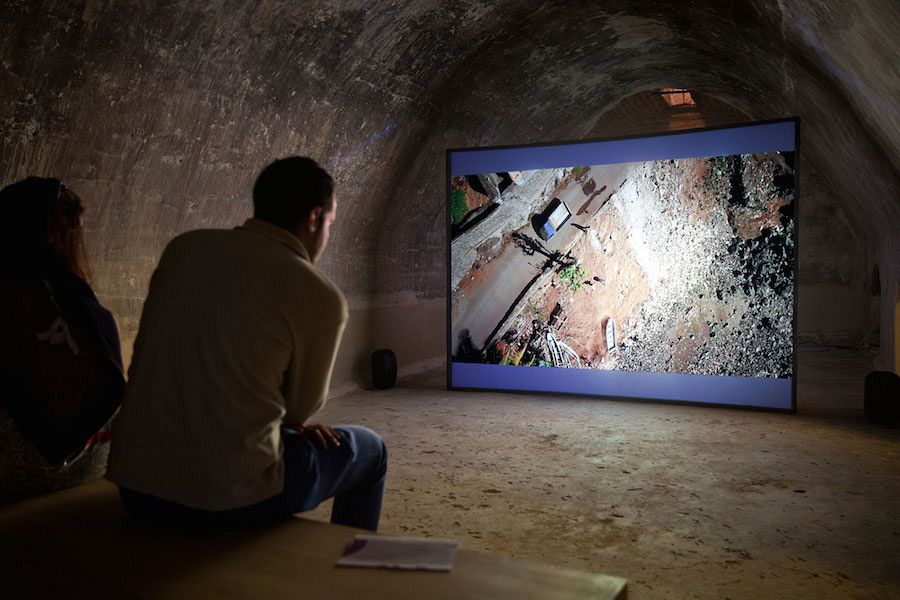
Superflex, Installation view of film “Kwassa Kwassa,” 2015. Photo by Samira Larouci. Courtesy of the author.
ME: So it’s not subtle.
JMS: No, one would not call it a subtle film. Nevertheless I think it was a very popular work, or that’s my impression, perhaps because it was so direct. I had some trouble with the way it filmed the manufacture of the boats.
MDC: You thought it was offensive.
JMS: I did. It was so fetishistically attentive to the boat construction. It showed the islanders stirring liquid Fiberglas, applying and splattering it. I thought there was a conscious attempt by Superflex to associate the making of the boats with making of artworks, with the application of paint. I found it very glib, if not grotesque.
MDC: You also said it was highly aestheticized. I hated that too. But I think this is also why it might be popular. It’s very compelling visually, and super high quality.
JDM: It had none of the hacked-together quality of the rest of the biennale. It’s incredibly sharp, even slick.
MDC: There’s an additional layer, as well. The film’s narrative refers to the myth of the beginning of Europe, a Phoenician woman named Europa who rides through the water to Greece on the shoulder of Zeus, who has taken the form of a white bull. And so Europe is imagined as being founded by such dangerous migrations, and Europe itself is named after Europa, one such “illegal immigrant.” This is an allegory for the political situation around immigration in Europe now.
JMS: So yes, a political allegory, if one that is unsubtle, highly aestheticized and super ambiguous. The Attia video installation was much better. It was in a parallel room, a long row of monitors with headphones and single seats, so you could watch one at a time. There were eighteen 20-minute loops of interviews with psychologists, anthropologists, and historians, a postcolonial elite, if you will. Each screen is about a specific topic—the project of translation, the psychoanalysis of colonized subjects, trauma therapy—an entire range of post-Fanon postcolonial psychology and political theory.
ME: It sounds belabored. Was it?
JMS: I thought so for the first two videos I watched. It seemed like what we were seeing was an elaborate body of research materials for Attia’s previous project Repair, which manifests in a slide show and sculptures. But after I sat through about eight, the different films began to add up in my mind to something more. They began to suture themselves into a larger constellation. I became increasingly aware not only of what the interviews were about, but also about the human beings who were being filmed, each describing their theories and inhabiting their bodies, constructing and repairing themselves through theorizing, and through language. It got more and more fascinating.
MDC: At the beginning I thought each film was about something different, and thematically they were, but in many cases, the same people were present. In one, they were talking about psychoanalysis; in another they were discussing labor. It was like a set of plays with the same actors playing new roles in each film.
ME: This kind of work makes me wonder again about audience. Who is it for? There are, of course, multiple ways to understand an artwork. But how do you take someone without much prior knowledge and put her in a room with eighteen monitors and say: “You need to spend about an hour to try to get what this is trying to tell you.”
MDC: People came in while we were watching and left without sitting down.
JMS: But the row of seats was mostly full when we were there. Every screen was being watched, so to move to the next I would have to wait until someone got up.
İU: And how would you relate those two works to the site, to the mosque?
JMS: I honestly didn’t think about the mosque once I was inside. What was more important was the fact that we were underground. It was a protected, secret area, to the side or behind the mosque, a space of secret knowledge. To return to your point, Mohamed, for me, the Attia was demanding; it demanded your time, but it rewarded that attention. And it also seemed to me as if it offered something like a rationale or theoretical backdrop for the entire exhibition.
MDC: How so?
JMS: It made clear that the exhibition is trying to think about Morocco’s relationship to its history of European colonization: the narrative of its struggles for independence and the foiling of that independence in the Years of Lead. The idealism of that anti-colonial struggle was immediately disappointed, and for decades Morocco became a place under a different sort of authoritarian rule. Its emergence from that period is recent and still incomplete. It remains a monarchy today. The exhibition happened “under the patronage of His Majesty King Mohammed VI,” as the website tells us. As a result, I think, the moment of independence has become hard to access emotionally, much less the deep past of the vernacular tradition. One can relate to the folk past or to the anticolonial past only as a ruin, only in fragments.
Attia’s work helps us think about this as a continuing condition. Many of the films are trying to think through the actual process of therapy for people who have lived through conditions of colonial violence and trauma. And overall the work suggests that the act of reconstellating and reassembling is the only way to make one’s way through it, at both individual and collective levels. Art has an important role in this. Attia’s work is a montage; it is, itself, an ordering of fragments. And this montage, or suturing together, happens not only onscreen but also in our individual minds.
MDC: This is important because it marks out the fact that this is a show not only about history, but also about the present. It is about our political moment. We have to think about Morocco’s geopolitical location—as a country not only connected to the Arab world, and close to Europe, but also to the South, to sub-Saharan Africa. There is a constant flow of people from south to north, who are stopped by the border, stranded here, and building a community of immigrants in this country.
JMS: This is key. No matter if I was frustrated by the Superflex work, what was important about Koutoubia was that it presented works that were not at all involved with the archaic or archaeological. They were very much directed at the present.
MDC: I agree. Postcolonial psychoanalysis is not only about a relation to France for the last 50 years, but is about the sans-papiers. Bouchra Khalili’s film Speeches – Chapter 3: Living Labor (2013), at Bahia, is also about undocumented workers from Mexico and Africa in the US. So alongside recovering history, or vernacular and craft forms, we have the present crisis. Otherwise, the exhibition would be too nostalgic, focused melancholically on lost moments.
JMS: The exhibition is most interesting if we see it as a meditation on the present.
ME: This is why I brought up the title Nothing New Now; these are carefully selected words for an exhibition of contemporary art.
MDC: I think it’s partly a reflexive thing, telling us that the biennial is not particularly concerned with showing us who is hot right now, the latest critical darlings.
ME: I want to think out the geopolitics of this in a different way. It’s an important gesture for Morocco to bring a curator who is based in the Gulf, working in the new Guggenheim, to the opposite end of the Arab world, and from one monarchy to another.
MDC: She is Palestinian.
ME: She is, but she is working outside that context. I think it’s just interesting that the poles of the Arab art world are in fact on its edges, while the Middle East has just fallen to shit. If you think about contemporary art in the region, it’s really Istanbul, far north, obviously the Gulf, then Morocco.
MDC: I think you’re underestimating how important Palestine is to Fadda. It’s as relevant to her practice as working at a big international institution. And the moments where this exhibition is most political come from that mental space.
ME: I think that we have to take account of how the Moroccan monarchy is trying to position itself. We have to think in terms of the Arab Spring, which largely did not happen here, or was suppressed more effectively than elsewhere. And so this exhibition has to be seen as a symbol of royal magnanimity, and also a bid for international prestige, in the wake of a revolution that didn’t take place.
JMS: How should that affect our understanding of the exhibition’s project, Mohamed? Any biennial is the product of multiple agendas—the government and the community, the curators and the artists. Are you suggesting that it is an act of bad faith or a declaration of innocence on the global stage? “Look, things aren’t so bad here as they are in Istanbul or Libya!” And even if this is true at some level, is it true for Fadda, for the artists, for Marrakech, for us?
ME: I don’t think I can answer that. But I was struck that it takes a certain kind of political and economic ability to achieve an exhibition like this in a city. The exhibition is not highly secured. Everyone can easily slip in and out. This would be unthinkable in Egypt today! And so there is a statement being made, implicitly at least, that “We’re OK.”
İU: I’m most curious about the reaction among the arts community here. I remember Berrada saying that the art scene in Marrakech can’t really be talked about in terms of continuing projects, that it is more about singular events. This biennale is, of course, another such event. However, there is such energy around it, and so many continuities with past artists being discovered and solidified, that I wonder if this condition might not shift things for the contemporary art community here and trigger new things.
JMS: This connects to what María said earlier. Is the exhibition describing something happening now? Does it reflect a kind of work currently being made in the region? Or is it isolating certain threads, like artists combining contemporary art with vernacular forms, artists working in archaeological aesthetic, in a propositional way? Saying, “This is what contemporary art from the Maghreb might look like?”
MDC: The latter. But the more important point is, going back to your reading of Attia’s work, understanding the whole situation in terms of decolonization. And I don’t think there is a single or linear argument here. The ideas of tradition, craft, vernacular styles, cultural memory, postcolonial psychotherapy, how moments of progress get interrupted and how their value might be recovered through research or fictional narratives all suggest actual possibilities for how people might sustain themselves and find ways to produce art in a place like this. How to endure civil war, how to live during a massive exodus of people trying to get to Europe.
JMS: We might end by talking about Tarek Atoui’s musical performance in a courtyard at Bahia, where he sat on rugs at the center of what Renaud described as Fadda’s contemporary response to the exhibition of the Casablanca School. Atoui performed twice at the center of this exhibitionary constellation, with the exhibitions of the Otolith Group, Murillo, Loving, and Gilliam sited around the perimeter. Although it was just a two-time event, I think we could test out the idea that Atoui’s performances were, nevertheless, the heart or “key” to the rest of that arrangement. How would we describe that performance and our experience of it?

Tarek Atoui, “Conjured Geographies,” performance, 2016. Photo by Julian Myers-Szupinska. Courtesy of the author.
ME: My first thought is that, maybe like the work of Attia, it was something that had to be engaged at its full length, which was more than an hour. He was manipulating samples of Moroccan trance music, and doing so in a way that was initially very abstract. Then at the end, when the drumming appeared in its clearest form, I thought “Oh! Have I been listening the whole time to a fragmented, manipulated, abstracted form of that?” Atoui was reworking these recordings through very modern processes. He was not simply recovering them in a nostalgic way, but remaking them completely. Had it been flipped around—had he begun with a clear reference that then disintegrated and become more abstract as we listened—it would have been a very different message.
MDC: Maybe it’s ridiculous to say so, but the moment the work made sense to me was when they served tea and cookies, because it emphasized that this was a communal experience and part of the hospitality of the place. Otherwise, we could have just been listening to a recording somewhere warmer. His performance was happening in real time, with these sounds reverberating among the different bodies present.
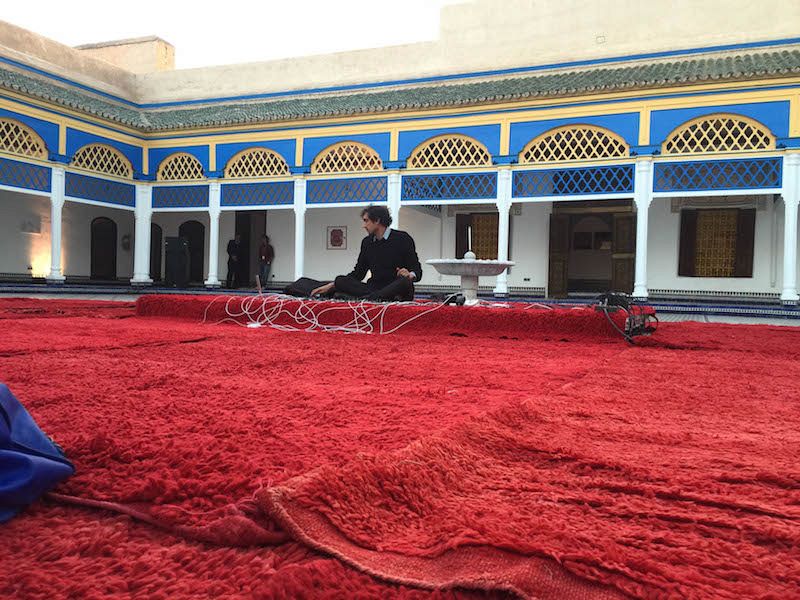
Tarek Atoui, “Conjured Geographies,” performance, 2016. Photo by Julian Myers-Szupinska. Courtesy of the author.
JMS: And we were in this circle of artworks, also there to bear witness. It helped me understand the exhibition’s take on their abstraction. That is, one has to pass through abstraction to finally allow the folk form, which was there all along, to reappear in the present. But this won’t happen through imitating the past; doing that, you just end up with folk art. To recover the past you need to tear it into pieces, in an almost violent way.
MDC: There was something so complex and yet so simple about Atoui’s approach, which was simply to teach us how to listen to the music of this place. I thought it was really successful.
İU: I’ve seen Atoui perform elsewhere, in Abu Dhabi for example, and it was a completely different experience. There, people were actually moving and dancing. This was a still, meditative experience. I think it was reminding us of different ways of learning or connecting with history through the body. It was a different sort of history writing, one I’d never considered before.
This dialogue took place in Marrakech in February 2016.
